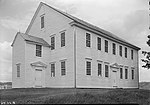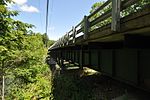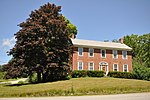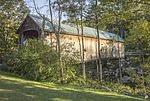Rockingham Village Historic District
Federal architecture in VermontGeorgian Revival architecture in VermontHistoric districts in Windham County, VermontHistoric districts on the National Register of Historic Places in VermontNRHP infobox with nocat ... and 3 more
National Register of Historic Places in Windham County, VermontRockingham, VermontUse mdy dates from August 2023

The Rockingham Village Historic District encompasses the traditional village center of the town of Rockingham, Vermont. Settled in the 18th century, the district, located mainly on Meeting House Road off Vermont Route 103, includes a variety of 18th and 19th-century houses, and has been little altered since a fire in 1908. It notably includes the 18th-century National Historic Landmark Rockingham Meeting House. The district was listed on the National Register of Historic Places in 2008.
Excerpt from the Wikipedia article Rockingham Village Historic District (License: CC BY-SA 3.0, Authors, Images).Rockingham Village Historic District
Meeting House Road, Rockingham
Geographical coordinates (GPS) Address Nearby Places Show on map
Geographical coordinates (GPS)
| Latitude | Longitude |
|---|---|
| N 43.188055555556 ° | E -72.488888888889 ° |
Address
Meeting House Road 19
05101 Rockingham
Vermont, United States
Open on Google Maps











